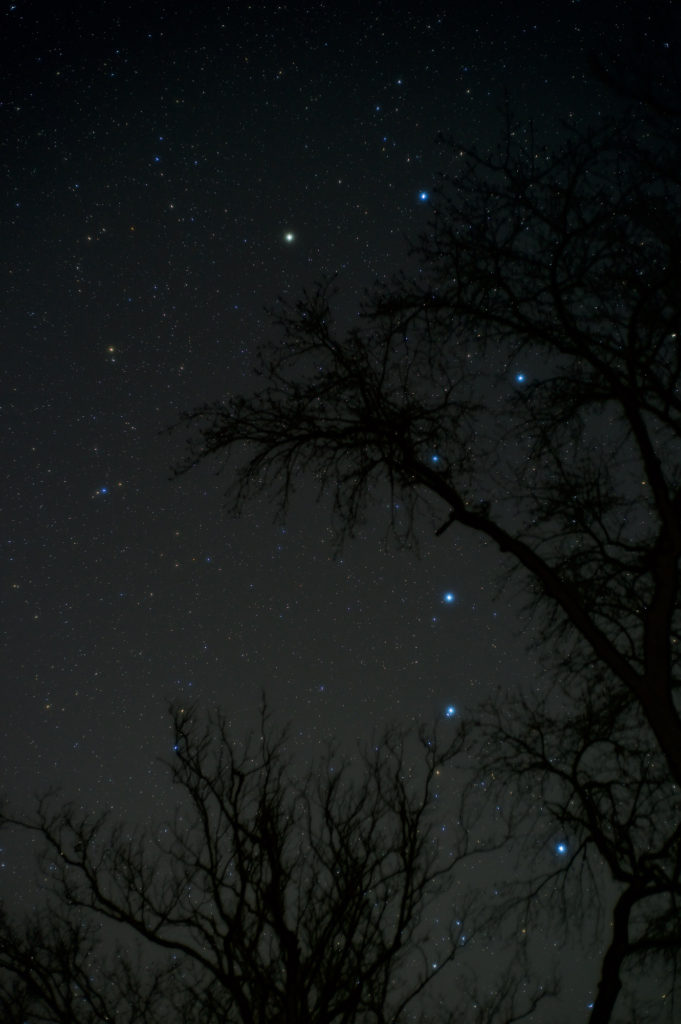The constellation of Ursa Major is, of course, The Big Bear. In this photograph, the constellation is positioned among the branches of an old oak tree for scale.
The familiar pattern of stars is more often referred to as The Big Dipper. Like all circumpolar constellations, The Big Dipper appears to move counter-clockwise around the North Star, and can be seen any time throughout the year, with its position in the sky changing depending on the season and time of night. The two end stars the form the spoon of the dipper are referred to as “the pointers”; an imaginary line drawn through them point towards Polaris, The North Star.
During late winter evenings, as seen here, The Big Dipper is high up in the northeast, with the handle pointing towards the horizon. By mid-April, the constellation will be at its highest point in the sky, appearing upside down, above the North Star. Later, around the time of the summer solstice, the constellation is located to the northwest, with the handle pointing upward. Finally, by early fall, The Big Dipper is at its lowest arc in the sky, just above the northern horizon.
Equipment: Nikon Df, 50mm lens.
This artwork was exhibited at the

